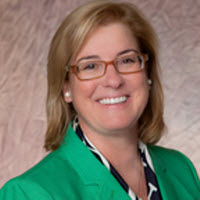
Today’s safety professionals need to be thinking about more than completing OSHA 300 logs and delivering hazcom training. They also need to be sure they’re providing benefits and value that contribute to overall business success. What does this mean, and how can you do it in your organization? Keep reading to find out.
At the recent BLR Safety Summit in Atlanta, keynote speaker Kathy Seabrook, founder and president of Global Solutions, Inc., told her audience that safety is closely aligned with top business priorities such as sustainability, supply chain accountability, and corporate reputation. By recognizing and leveraging these connections, safety professionals can play an important role in business growth and competitiveness. They can also advance their own careers.
Seabrook, who is the current president of the American Society of Safety Engineers (ASSE), told members of the audience at BLR’s first Safety Summit that they should be responsive to a number of trends.
One is the uptick in the economy and the resulting increase in foreign acquisition of American businesses. For safety professionals, that means the business you are working for today might at some point be acquired by a non-U.S. company with a different safety culture. For example, many businesses in European Union member countries require safety certifications and compliance with global consensus standards like ANSI Z10 and OHSAS 18,001. These standards, not yet widely adopted in the U.S., emphasize use of safety management systems and a risk-based approach. Seabrook advocates these methods and encourages safety professionals to gain what she calls “global fluency.”
Another trend linking safety with larger business priorities is sustainability, also known as corporate social responsibility. A U.N. commission describes sustainability as “development that meets the needs of the present without compromising the ability for future generations to meet their own needs.”
According to Seabrook, “Providing a safe place to work is an integral part of demonstrating sustainability in an organization.” Corporate social responsibility is a growing priority for many companies, as well as for their shareholders, customers, and other stakeholders. The market sees sustainable companies as a good investment, and customers reward them with brand loyalty. Operating a workplace where employees are safe also helps attract workers—another aspect of sustainability, Seabrook adds.
As well, she noted a trend toward supply chain accountability. It seeks to ensure that supply chain partners—companies that provide the goods and services required to produce a product—demonstrate principles of sustainability including providing a safe place to work.
Research by Accenture found that 76 percent of CEOs surveyed believe that embedding sustainability into their core business practices will drive revenue and growth applications. With that in mind, Seabrook advises safety professionals to climb on the bandwagon. “Ask your companies what they’re doing with sustainability and see how you can align with them,” she recommends.
Safety can impact your company’s reputation
Impact on a company’s reputation is another way in which safety contributes to larger business goals. Safety-related incidents like the Imperial Sugar plant explosion in 2008 and the BP oil spill in the Gulf of Mexico in 2010 can be highly detrimental to a company’s reputation. Similarly, when it was discovered that employees at a supplier business for Apple were working in highly unsafe conditions, the company faced a negative backlash.
In addition, a number of well-known American clothing brands faced criticism when more than 100 workers perished in a fire in a Bangladeshi factory where their clothing was being produced. The businesses involved were publicly associated with employee risk, and their “reputational risk” suffered as well, Seabrook notes.
Become a safety partner instead of a safety cop
The days of the safety professional acting as a company’s safety police are over, asserts Kathy Seabrook. Rather, the focus today is on partnering with business to achieve common goals. She encourages safety pros to earn themselves a seat at the table by developing strong safety management systems supported by a robust safety culture. “Align safety initiatives with business to be successful,” she advises.